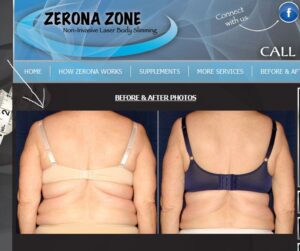Building a new website can be a labor-intensive process. Most of the time and attention is spent getting the design “just perfect” and then adding all the content for each of the different procedures your practice offers. Then once you’re happy with the design, and the pages have been added, you optimize the site based on your keyword research and get it live. The problem is that the majority of practices fail to incorporated all the right tools to help not only drive traffic to the site, but convert that traffic into leads and consultations.
I’ve put together a list of 10 tools that every practice needs to incorporate into their website. These suggestions should be considered and discussed in the very beginning of your website project, as many of them need to be incorporated into the design.

2) Phone number in the header (address helps too): The last thing you want is a potential patient, who is in a rush, come to your website and not see a phone number anywhere on the home page, or in the header, and leave. You’d be surprised at how often this happens, so make sure you incorporate it into the header, and also include it in the body of the text on the home page and in the footer. Listing the address in the header is also a good idea.
3) Opt-in form near top of home page (preferably on every page): This I something that I consistently harp on. Your website is in place to generate leads, which results in consultations, which in turn results in patients. Sure, you want to provide quality information, but that’s just a by-product having a website. Your goal should be to have a website in place to bring in new patients, period.

5) Videos: Like photos, videos provide credibility for the practice. Consider creating a professional video tour of the office, as well as the doctor, or nurse, speaking about a given procedure. Most importantly though, make sure you continuously create and post videos of patients telling their story and raving about your practice! All you need is a camera that records video, sufficient lighting and a steady hand. If you have to do any editing you can do so very easily with video editing software that’s likely already on your computer. Make sure to optimize these videos and post them to Youtube as well.
6) Printable Forms: A convenient tool for both patients and the staff at your practice. Having forms that can easily be printed out and filled out can save everyone a lot of time.
7) Google Maps: Another convenient tool to have. Usually located on the “contact” page, a map is more effective that a simple address for showing people where you are located, and you can get directions with one click of your mouse!
8) Specials Page: People like deals, so create a separate page for them on your website! Make sure you keep this page updated from month-to-month and that the deals you offer are consistent with any other deals you’ve announced on social media.
9) A Blog: I’m not going to go into the importance of blogging for plastic surgeons, cosmetic dentists, med spas and other medical practices. You can click the aforementioned link to learn more about blogging, but the bottom line is: if you’re not blogging you’re missing out on visibility. This is the most important tool mentioned on this list for driving traffic to your website.
10) Google Analytics: This is not a tool you use on the front end of the site, but still worth mentioning. You need a way to easily track how well all these other tools are performing, and Google Analaytics is the best tool for tracking.
Given more time, I’m sure I could have come up with more suggestions, but these are all tools that every medical practice should incorporate on or within their website. If you have any other tools you think should be added to this list we’d love to hear from you.
To learn more about all the tools you need for a successful website or a successful marketing plan leave TRBO a note or call us directly at 877-673-7096 x2.





